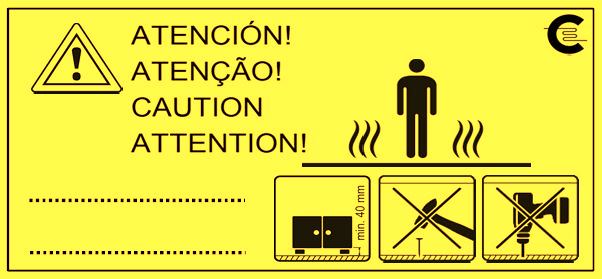Best practices – Part 2: Heat dissipation
In our first article about best practices, we underlined the importance of the floor thermal insulation. In this second part, we will detail the required installation steps to ensure optimal heat dissipation in order to achieve comfort, energy savings and long lifetime. ![]()
For an optimal system operation, dimensioning and product selection have to consider the available room surface where the heating mat will be installed, deducting the room perimeter (minimum 10 cm), besides the area of fix furniture in direct contact with the floor (bathtubs, cabinets, kitchen furniture or any furniture without a minimum clearance of 5 cm from the floor). The required output will then be optimally spread in the entire available surface.
During the installation process, the heating mat has to be correctly laid so the heat generated can be dissipated uniformly without any perturbation. The thermal resistance between the heating mat and the room should be less than 0.18 m2K/W in all points. To achieve it, it is mandatory to respect those three plain installation rules:
![]()
![]()
![]()
- The heating cables of the heating mats may neither touch nor cross one another.
- No material that could affect the correct heat dissipation towards the room should be left over the heating mat or located between the heating element and the floor covering (No electric cables, neither insulation material, neither pipes, neither any construction residues, etc..).
- Cable has to be totally embedded within the adhesive material/screed suitable with underfloor radiant heating, following the manufacturer’s instructions to avoid subsistence of any air bubbles close to the cable.
If any of those rules are infringed, thermal blockage could occur leading to heat accumulation, possible damage to the heating mat, accelerated ageing of the heating element, cold floor areas and energy losses.
Finally, the end user must be instructed by the supplier regarding the installation of floor heating to avoid location of any decorating elements or furniture (carpets, fix furniture) that may impede the correct heat dissipation. This fact is stated on a label which comes with the product and must be glued into the switchboard to facilitate the information to each house occupant (renter, new owner).


